Making Tax Digital as an Individual
Embarking on the journey of Making Tax Digital (MTD) for Income Tax Self-Assessment (ITSA) is a transformative step in the modern tax era. This article dives deep into the realm of MTD, exploring how you, as an individual, can navigate this new landscape effortlessly.
What is Making Tax Digital (MTD)?
MTD is a government initiative spearheaded by HMRC to modernise the UK’s tax system. By converting all tax systems into digital formats, HMRC seeks to streamline income tax operations, providing taxpayers with a more convenient and efficient experience.
Who Does MTD for Income Tax Affect?
From April 2026, MTD for Income Tax will apply to self-employed individuals and landlords with a business or property income above £50,000 annually. Those affected must keep digital records and submit quarterly updates to HMRC using compatible MTD software.
How Does MTD for ITSA Work?
For those affected, MTD for ITSA involves maintaining a digital record of their income and expenses. Rather than filing a self-assessment tax return at the end of each tax year, individuals need to send a quarterly update to HMRC. This update ensures accurate tax records, making it easier for individuals and HMRC to understand the tax owed.
What is the Role of Digital Record-Keeping in MTD?
Digital record-keeping is the cornerstone of MTD. All income and expenditure data should be kept in digital format using MTD-compliant software. These digital records streamline the submission of income and expense data to HMRC, reducing errors in tax reporting and making tax affairs more transparent.
Can I Opt for an exemption from MTD?
Yes, there are certain exemptions from MTD. For instance, HMRC grants exceptions based on religion, insolvency, and those who cannot engage digitally due to age, disability, or remote location. To find out if you qualify for an exemption, consult your tax adviser or check the guidelines on the HMRC website.
Key Takeaways:
In conclusion, here are the key points you need to remember about MTD for ITSA:
- MTD is an initiative by HMRC aimed at modernising the UK tax system.
- MTD for ITSA will apply to self-employed individuals and landlords with an annual income above £50,000 starting in April 2026.
- Affected individuals must keep digital records of their income and expenses and send quarterly updates to HMRC.
- Exceptions to MTD are available based on religion, insolvency, and inability to engage digitally due to age, disability, or location.
Navigating MTD for ITSA is a significant stride towards a fully digital tax system. By understanding and implementing MTD, you can take control of your tax affairs, making tax more straightforward and less time-consuming. If you have more questions about Making Tax Digital, the HMRC website provides comprehensive information on MTD compliance, exemptions, and how to get started.


Request a call back
Let us know when you would like us to call you back by filling in this form:
Our 5 Star Reviews



Latest News

Making Tax Digital 2023: MPs Criticise Delays and Complexity
Explore the challenges and impacts of the UK’s Making Tax Digital initiative, including delays and the cost burden on taxpayers.

Making Tax Digital: Small Business Review
Making Tax Digital Small Business Review 2023: Understanding the Basics and Preparing for Change Introduction to Making Tax Digital (MTD) Since 1948, Jack Ross Chartered

Making Tax Digital: The Rising Costs and Challenges
Making Tax Digital: The Rising Costs and Challenges Introduction Making Tax Digital (MTD), the ambitious initiative by HM Revenue & Customs (HMRC) to digitise the
